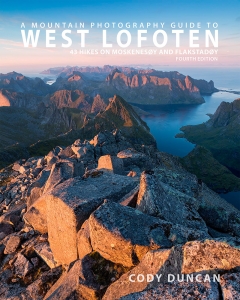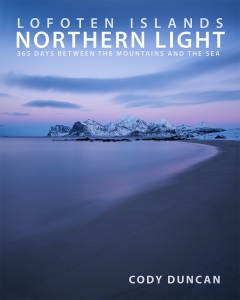
Photo: Meadow of yellow buttercup – smørblomst flowers overlooking Nappstraumen, Flakstadøy, Lofoten Islands, Norway. June 17, 2025. 22:53
The Summer Solstice is tomorrow here in Norway, and with that, the official start of Summer. Although realistically, I consider all of June to be Summer here on Lofoten – Basically once the fields are green and full of flowers. It is in these next couple weeks, from the 2nd half of June into the first weeks of July that Lofoten is at its most vibrant and colourful stage of the year – all underneath the 24 hour shine of the Midnight Sun.
Many are hoping for a repeat of last year’s incredibly warm and sunny summer, but so far the Lofoten’s is remaining on the cooler and greyer side of things, with many days of misty clouds over the past weeks and only a handful of days even reaching 15˚C. Although this is not abnormal, a coolish June. And in fact, June has basically the September, 9.7˚C and 9.4˚C, respectively. It is only the months of July and August where the islands reach an average higher than 10˚C. With the new travel trend of ‘coolcation,’ Lofoten will generally always be a good place to escape the burning sands of southern European beaches.
On the brighter side, it looks like the sun will make a nice appearance for tomorrow’s Solstice and might even stick around the rest of the weekend! Hopefully it’s enough to dry out my overgrown lawn, with is about a month overdue for it’s first mowing of the summer, as I spend the end of May and the first half of June down in Scotland, mostly on Shetland and Orkney photographing puffins and gannets.
I had not actually intended 2 photos this week – usually I save for when I’m trying to illustrate some change in conditions or something. The second photo (below) is what I planned to post, to show the nice misty clouds over the mountains of Himmeltindan, Mannen, and Veggen, as they rise in the distance from Vestvågøy. But as I just got back home this week, the field has already become a little overgrown as the grasses begin the grow higher than the flowers, making the foreground a little busy.
The above image caught my eye better once I sat at the computer to look for an image to edit. It doesn’t really show what I wanted to illustrate or write about for this week, but I think it’s a better image overall.
Camera Info:
Nikon Z8
Nikon 24-120mm F/4
75mm
ISO 500
f5.6
1/160 Second
WB Daylight

Photo: Misty clouds hang over distant mountains rising over Nappstraumen, Flakstadøy, Lofoten Islands, Norway. June 17, 2025. 22:52
Camera Info:
Nikon Z8
Nikon 24-120mm F/4
70mm
ISO 500
f5.6
1/160 Second
WB Daylight













